Considering a Weighted Blanket? Here’s What We Learned!
The “great sleeping temperature debate” is what initially prompted Greg and I to try a weighted blanket on our bed. He sleeps hot and doesn’t like a ton of blankets, but I love the feeling of being buried beneath layers of covers. After hearing about weighted blankets, we decided it was worth a try to see if the extra-heavy blanket kept him cool but me plenty cozy. Three years later, we can hardly sleep a wink without it. If you’re curious about weighted blankets or are considering one for your own bed, let me share what we’ve learned and some things to keep in mind when shopping around!
What Is a Weighted Blanket?
A weighted blanket is pretty much exactly what it sounds like: a heavy blanket. Also known as “gravity blankets,” they come in all sorts of sizes (from a throw blanket up to King size) and range in weights from 5 lbs to 30+ lbs.
Most weighted blankets though, are not just blankets made of a thick, heavy material (as I initially thought!) Rather, most are lightweight quilted blankets that are filled with thousands of tiny beads (microbeads or plastic pellets)…that, when spread across the entire blanket, provide the indicated amount of weight (e.g., 15 lbs).
What Is the Allure of a Weighted Blanket?
Weighted blankets have long-been used in therapeutic and behavioral health settings for both adults and kids. Just like swaddling a newborn or thunder coats for dogs, it is generally believed that the added weight is calming to the nervous system, thereby reducing anxiety, over-stimulation, and stress…which in turn can lead to better, more restful sleep.
In recent years, weighted blankets have become more mainstream as a way to deal with anxiety, ADHD, autism, chronic pain, insomnia, restless legs syndrome, and other sleep-related issues. However, scientific data supporting these claims is actually pretty sparse (as I discovered when putting this post together). There are even some health conditions that are contraindicated for weighted blankets (e.g., low blood pressure, asthma, and others) so consider checking with a doctor before using one. That said, anecdotally you will find plenty of people (like me!) who swear the added weight leads to better, deeper sleep and a sense of feeling more rested in the morning.
What Does Sleeping Under a Weighted Blanket Feel Like?
When I crawled under our weighted blanket for the very first time, “underwhelmed” is the word that comes to mind. It was, after all, a 25 lbs blanket; and I fully expected to feel like I was lying under a 25 lbs weight. But it’s important to remember that the 25 lbs (or whatever weight you get) is spread out across the entire blanket. So the amount of weight on any particular part of your body is significantly less.
So while I was initially underwhelmed at how “heavy” the blanket felt, there is definitely a difference compared to a standard coverlet or comforter. The best analogy I can give is as if you were lying under several quilts or thick blankets at one time…but without the added warmth. Or if you’ve ever used a rice-filled heating pad…it’s like that but in blanket form. It’s weighted, but not heavy. Pressurized, but not suffocating. Cozy, settling, and quite comfortable!
The Beads Inside the Blanket
As mentioned above, it’s not the material of a weighted blanket that makes it so heavy, rather…it’s the filler. Most weighted blankets available on the market these days are filled with hundreds of thousands of tiny glass beads. In most cases, the weighted blanket will be quilted, and the beads will be contained within the pockets created by the sewn stitching. Not only does the quilted design equally spread the weight out across the entire blanket, but it also prevents the beads from shifting entirely to one side of the blanket or the other.
Do the Beads Shift Around?
If you start to research weighted blankets, you will likely read lots of reviews that mention the beads shifting around the blanket. To be clear, you do not want the beads moving around the entire inside of the blanket. This could result in beads “pooling” in parts of the blanket, making some sides/corners heavier than others (which negates the whole purpose of using a weighted blanket).
The key to reducing how much the beads shift around is the quilting….the tighter the quilting, the less the beads shift around and the more even the overall pressure provided by the blanket.
The Beads In Our Grey Weighted Blanket
Our very first weighted blanket was a grey velvet one by Layla. As a Christmas present, Greg simply researched “the best weighted blanket” available and purchased this one. We loved everything about this blanket and only looked to replace it because I didn’t love the color (grey) or the size (it didn’t fully cover our King bed as shown below).
It was when I started researching for a new weighted blanket that I first learned about the microbeads shifting. I bring this up primarily to emphasize that the beads in the Layla blanket didn’t shift at all. To the point that I didn’t even know they were there.
The Beads In Our White Weighted Blanket
I set out to replace our Layla blanket only because I wanted to use the weighted blanket as our primary bed cover. (Until this point, we had a regular bedspread and then used the weighted blanket as a “topper.”) When Layla didn’t make a blanket large enough for our King, I hunted down other options and landed on this one: California King Size Weighted Blanket for Couples.
At first glance, I loved everything about this weighted blanket. It’s size fully covered or deep King mattress. The light-weight cotton was excellent for my hot sleeper husband. The square quilted pattern was simple and classic. And most importantly, it was bright white (which is what I like to put on all our beds).
When I first put the blanket on our bed, I was still somewhat oblivious to the “bead shifting”situation I read so much about. But within a week of using it, I started to notice the beads pooling in the corners of each quilted pocket. Now, almost 6 months later, the weighted blanket has little mounds in the corner of almost every square.
At first, this “pooling” bothered me (especially since we didn’t experience this at all in our grey blanket). But having lived with it for so many months now, I can say for certain it doesn’t really effect the overall look or effectiveness of the blanket. Yes, from certain angles (like shown below), you can see the little mounds on the blanket. But the overall look of the blanket as you move about the room is smooth and clean and uniform (not lumpy or ugly). Additionally, the blanket still feels uniformly heavy, and I still sleep soundly under the weight provided.
How to Prevent Beads from Shifting
The best way to prevent shifting beads in a weighted blanket is to purchase one with as tight of quilting as possible. Very narrow channels and small pockets will prevent any noticeable build up of glass beads.
If the glass microbeads in your weighted blanket have already shifted (like mine), I’m not sure there is much you can do. Yes, you can painstakingly smooth all the beads back flat, but they will likely shift once you use the blanket again.
How to Clean a Weighted Blanket
Even though our weighted blankets indicate they are machine washable, I do not feel at all comfortable putting 30 lbs into our washer or dryer. As such, we’ve taken to spot cleaning our weighted blanket as necessary and then plan to bring it to a dry cleaners twice a year.
I have noticed that our weighted blanket has little loops on it that could hold a cover in place, much like a duvet cover. If you want to have an easily-washable bedspread, this is a great option to consider (and a cover might also hide the “mounds” created by bead shifting, if they bother you.)
Buying a Weighted Blanket
What Size Blanket Should You Get?
What size blanket you get entirely depends on where you plan to use it. If you just want it for watching movies or cuddling on the couch, a throw or twin size is plenty sufficient (some even have cozy minky or fleece on the underside of the blanket).
However, if you are looking to use a weighted blanket as a bedspread, I highly suggest you read the blanket dimensions carefully. Our grey weighted blanket was listed as a “King,” but it didn’t nearly cover our King bed and could never have worked as a stand-alone bedspread. We had to look long and hard to find a “California King” weighted blanket that fit our mattress with plenty to hang down on all sides.
What Weight Blanket Should You Get?
You might think to yourself, the heavier the better! But blanket weights are actually recommended based on body weight. Most experts suggest that the ideal weight is approximately 10% of your body weight, but this can range from 5% up to 12% based on your personal preference. (Source)
If you sleep with a partner, keep in mind that the body weight is based on both people…so couples can usually go heavier than a throw blanket or single sleeper.
Where to Buy a Weighted Blanket?
We originally bought our grey blanket directly from the Layla website because they weren’t quite as common as they are now. Amazon carries a really wide selection in sizes, colors, weights, retailers, and even fabrics. Here are a few that caught my eye.
1 – Weighted Blanket for Couples | 2 – Layla Weighted Blanket | 3 – Sherpa Fleece Weighted Blanket | 4 – Faux Fur Weighted Blanket | 5 – Quilted Weighted Blanket with Soft Cover | 6 – Weighted Blanket with Minky Duvet Cover
If you do order a blanket for delivery, keep in mind that the package will be quite heavy. Again, all folded up tight, the weighted blanket will be a full 30 lbs (or whatever you get). But once spread out, it will feel lighter and more manageable.
Other Things to Consider When Buying a Weighted Blanket
Making the Bed
Greg jokes that we don’t need to lift weights because we make our bed with the weighted blanket every morning. And while the blanket isn’t quite that heavy, you can’t really just throw it around when you are making the bed or changing the sheets (like you can a typical blanket). We have certainly never thrown out a back or pulled a muscle because of the weight of our blanket, but if you have a bad back or chronic pain, this might be something to be aware of.
Sleeping Without It
When we swapped out our grey blanket for our white one, we joked that the grey blanket should become our “travel weighted blanket.” And now having lived without our weighted blanket for 2+ months while we moved from Virginia to North Carolina, I don’t think we should have joked…we should have seriously brought it with us.
To say that we’ve gotten used to the weight provided by the blanket is an understatement. We now instantly notice when we crawl into bed without one, as it barely feels like there are blankets on the bed at all! As a result, we tend to sleep horribly at Air B&Bs and hotels. I don’t consider this a deal breaker to not investing in a weighted blanket, but just another consideration to keep in mind.
If you’ve been curious about what weighted blankets are and/or what to keep in mind as you shop for one, I hope you find this post helpful. If you have any questions or experiences on the topic, feel free to chime in below. I love hearing how others experience the same products I love!
Megan



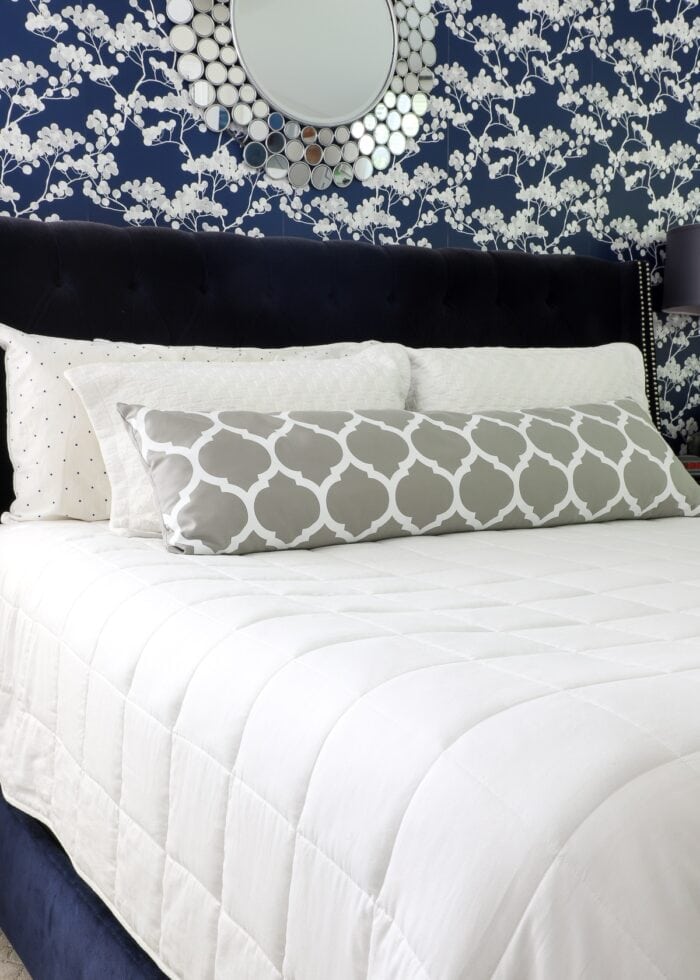
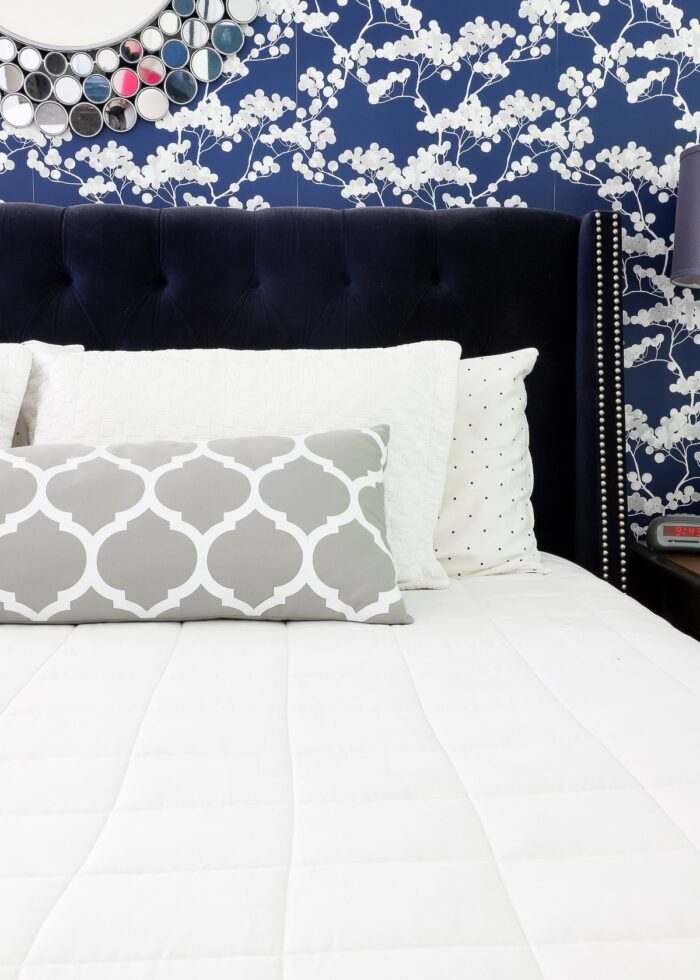
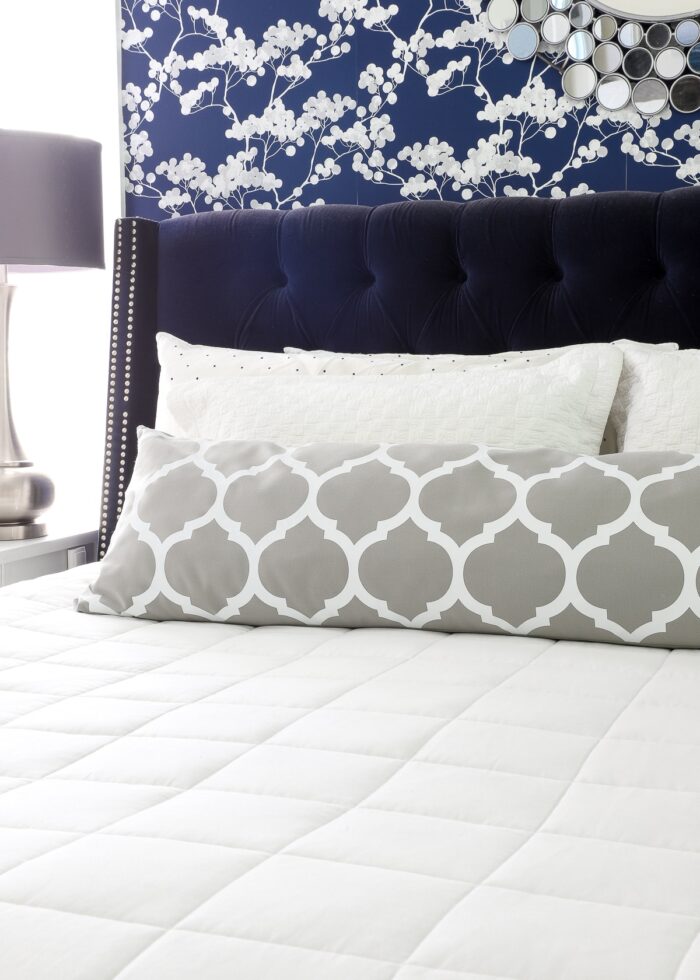

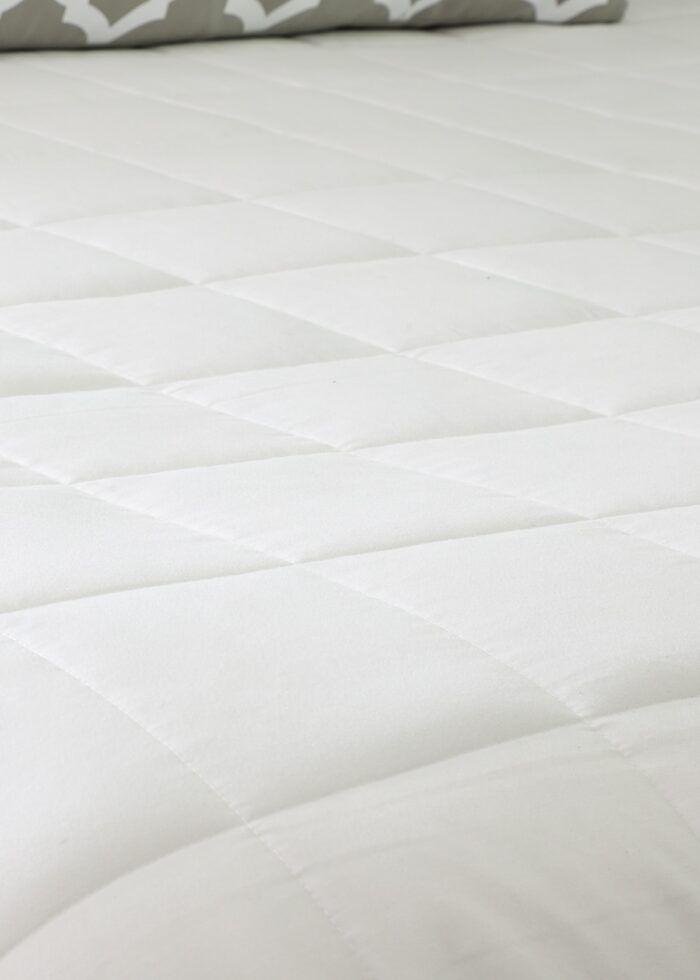
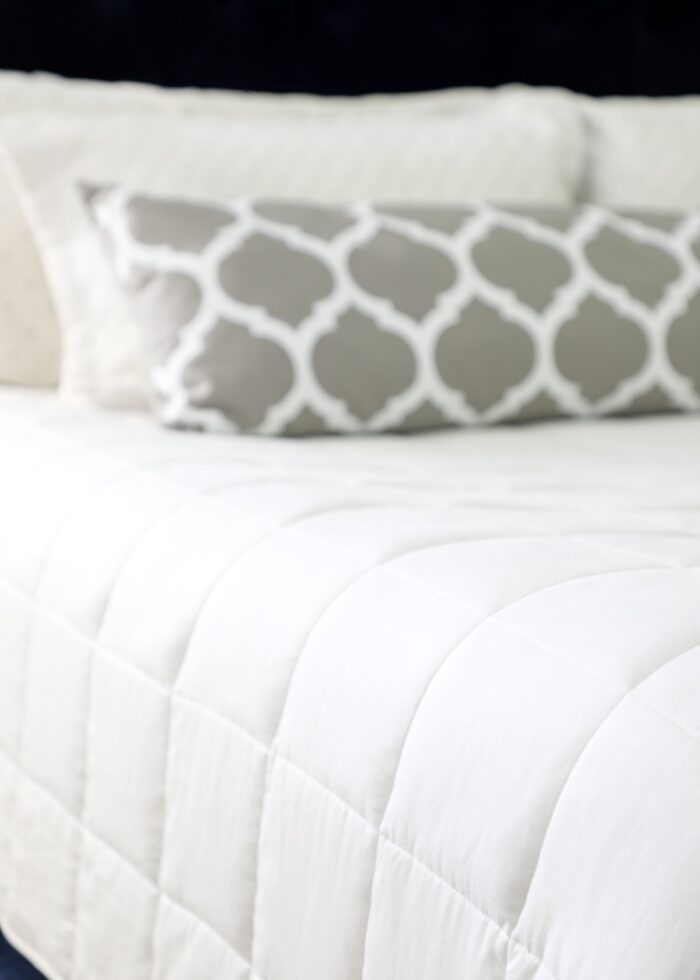
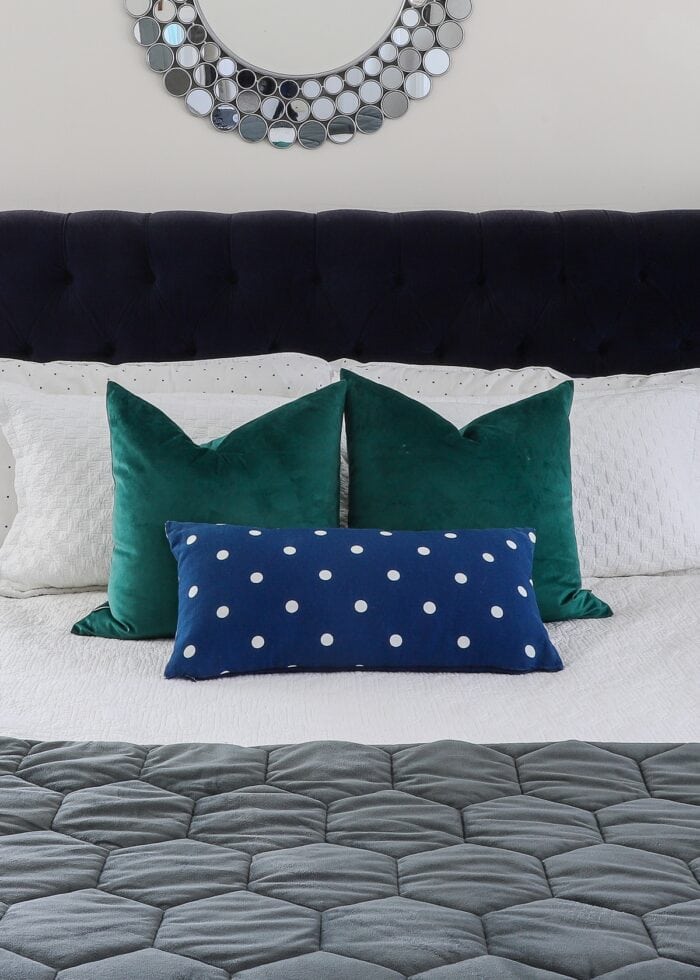
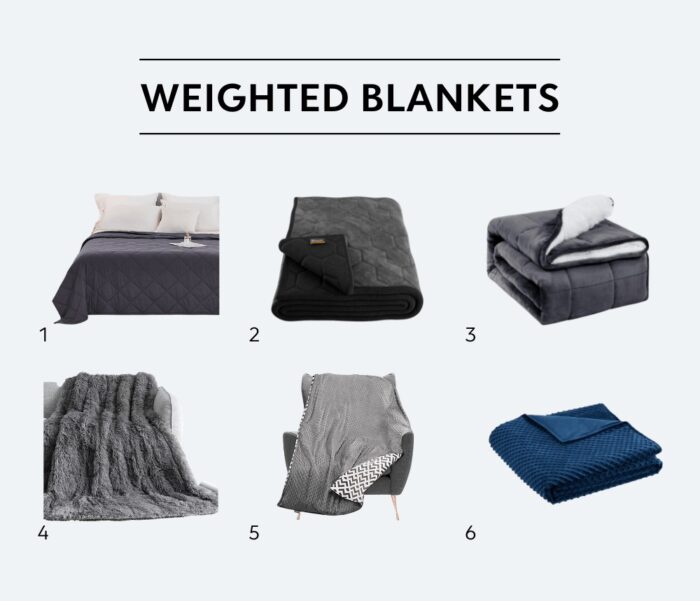
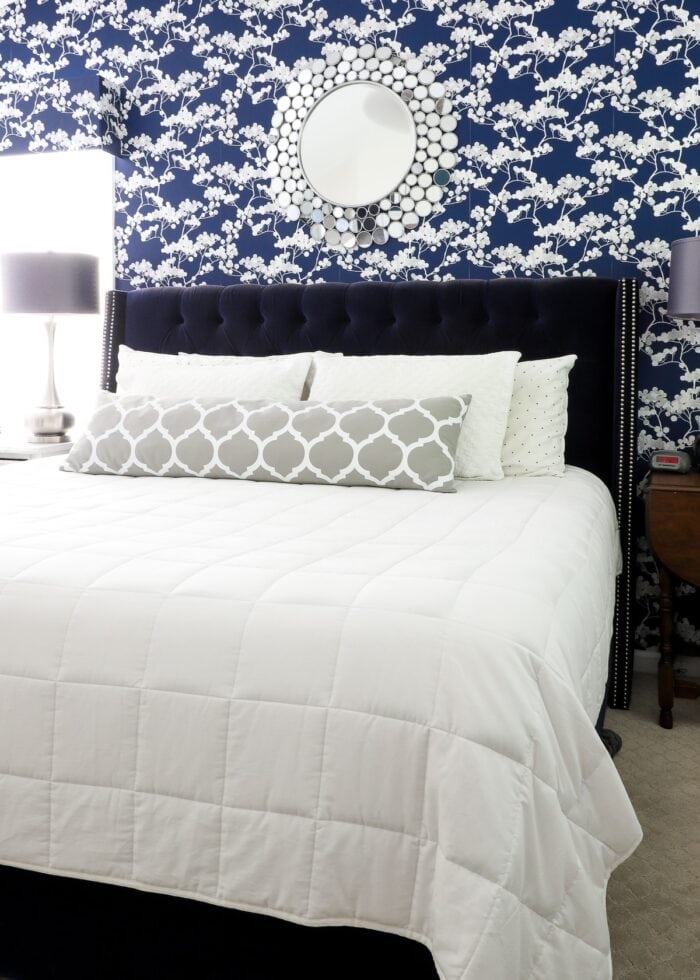
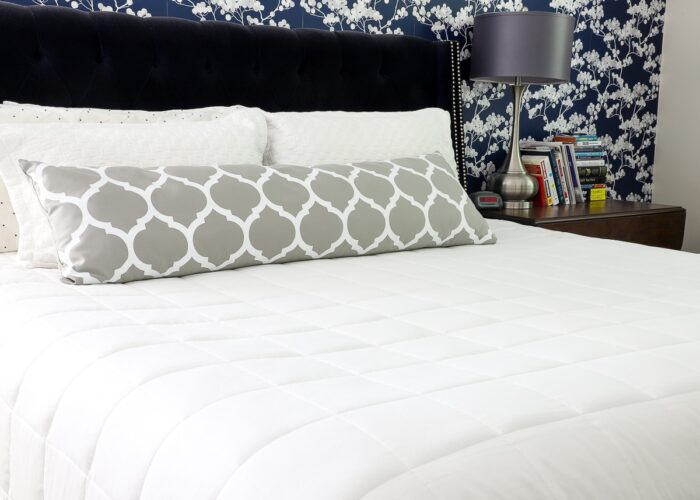

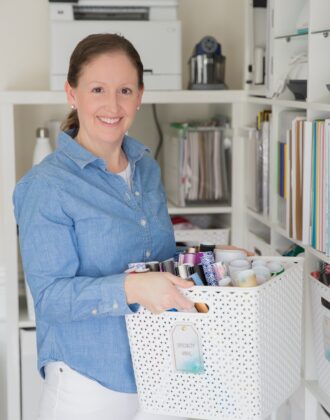
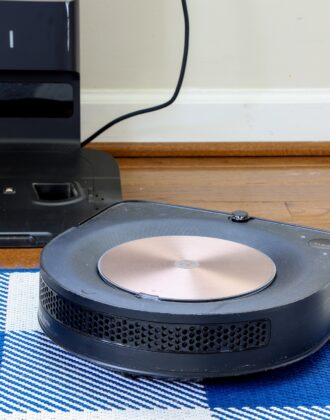
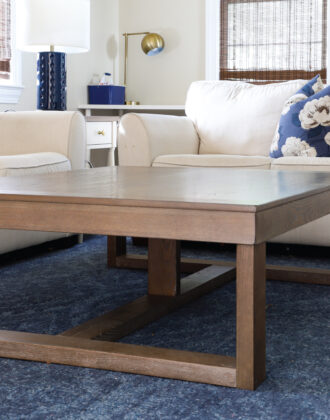

6 Comments on “Considering a Weighted Blanket? Here’s What We Learned!”
Interesting. I really have not thought of a weighted blanket. But reading your information, I am now thinking it might benefit most members of my family. Thank you for taking the time to research and share all this information!
You are most welcome, Kristie!
Hope you have a great week ahead!
Megan
As I anxiously await your NC update posts, can you give feedback on velvet vs cotton?
You have me interested in the Layla for its quality but would like white cotton too. I also have a husband that hasn’t gotten the memo that my domestic purchases are always form over function and will not be telling him there are easier to maintain colors that make more “sense.”
Glad your family survived as a nomads this summer and love that you post the good, bad, and ugly! Looking forward to more.
Happy Monday, Lauren!
Your comment made me laugh – my husband is constantly losing the “form over function battle” 😂
I will say the Layla blanket does feel like better/higher quality than our white one. I can’t really explain it – I think the velvet just feels heavier, sturdier, nicer than the white cotton. Even the other day, I was putting the grey one in the closet and it just feels like a more-quality blanket. If they had it larger and in white, I’d definitely go with the Layla one. If the large Layla would fit on your bed, it might be worth exploring to see if there are some sort of covers that would fit it??
Not sure I’m much help here, lol!Megan
I absolutely love my weighted blanket but can only use it for really cold nights or naps as I found that I get way too hot under it after time.
My husband likes the 15-lb. weighted blanket (grey) (a gift from family), but I found it suffocating. Probably b/c he has A-Fib and is cold, while I have asthma and other respiratory issues. Not being able to launder it is a big minus for me. My research for a duvet cover that fit was unsuccessful. I devised a method of folding and rolling it up when I make the bed. At night I hoist it from its chair, unroll and unfold it over him. 🙂 Altho’ he misses the weight, he says it’s too hot to use most summer nights. Signed, “Not a Weighted Blanket Fan.”
P.S. The beads have moved somewhat. I tho’t it might be due to the twice-daily rolling. After reading your post and others, I think it’s the nature of the beast we were gifted. 🤔